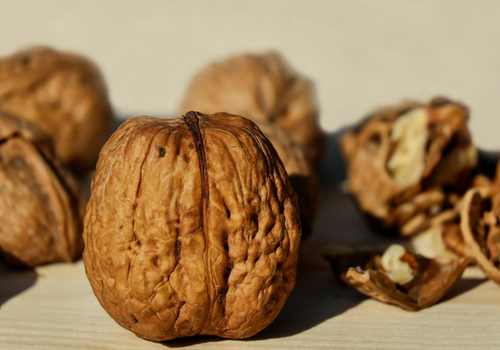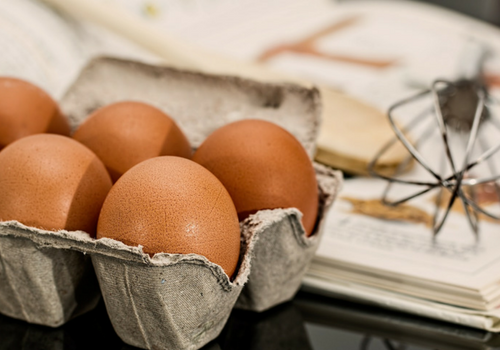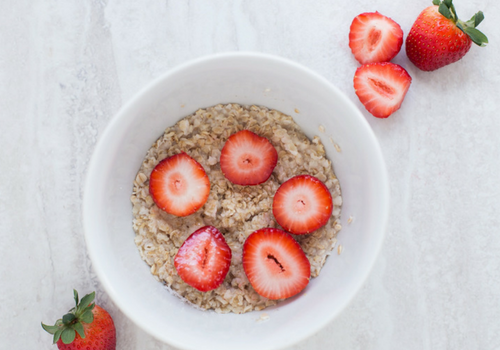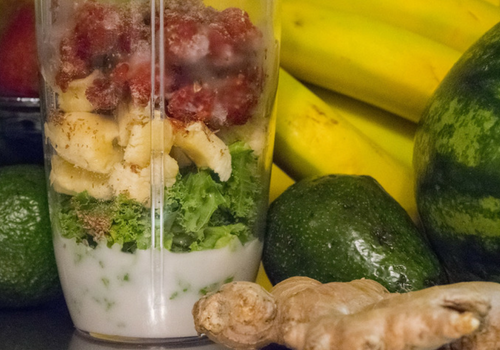We certainly know we are what we eat ... especially after those three pieces of pizza last night left us feeling bloated and tired. Blech.
So today we will start new, with better nutritional choices! We're here to help with ideas on seven brain-boosting foods that are easy to add to the breakfast rotation. (Spoiler: Pizza is not on the list.)
Dark Chocolate
This guilty pleasure is nothing to feel guilty about! Studies have shown that eating dark chocolate can improve blood flow to the brain and even encourage the growth of new brain cells, thanks to its high content of flavanols. Flavanols benefit our heart, skin, and immune system too! Additionally, studies show that cacao flavanols can protect our cognitive abilities as we age.
 | How to Eat It:Blend together one banana, 1/4 cup of peanut butter, two cups of milk, 1-2 tablespoons of dark cocoa powder, and 1 scoop of unflavored or chocolate protein powder in a blender. Use a frozen (peeled) banana or add ice for a thicker smoothie. Yum! Serves 2. |
Walnuts
All nuts are good for the brain, but walnuts are the best of the bunch. These nuts are especially high in DHA, a type of omega-3 fatty acid. Walnuts have been linked to brain health in babies, increased inferential reasoning in young adults, and improved cognitive performance in older adults.
 | How to Eat It:Just 1/4 cup of walnuts provides 100 percent of the recommended daily allowance of DHA, so stir that amount into a cup of plain Greek yogurt sweetened with berries, preserves, or applesauce. Or add 1/2 cup of chopped walnuts to your favorite pancake recipe ... they're especially delicious in pumpkin pancakes! |
Flaxseed
ALA is a type of omega-3 that our bodies convert to DHA and EPA, both of which are found in fish ... but who wants to eat or smell fish first thing in the morning? Milled (ground) flaxseed has both soluble and insoluble fiber, providing benefits to our digestive system too!
 | How to Eat It:Stir milled flax or flaxseed oil into smoothies, yogurt, or cooked oatmeal. You can also use flax as an egg substitute in your favorite muffin recipe. Simply stir together 1 Tbsp of ground flaxseed and 3 Tbsp of water and refrigerate until it becomes gelatinous, about 15 minutes. |
Eggs
Versatile, affordable, and packed with protein ... it's no wonder eggs are a popular breakfast item! They are also a good source of choline, a B-vitamin that is essential for brain health and may improve short-term memory and aid in learning. It is concentrated in the yolk with very little in the white part of the egg.
 | How to Eat It:Generously spray a muffin tin with cooking spray. Whisk together one dozen eggs. Fill muffin tins halfway with any combination of breakfast meat, veggies, and cheese you choose (we love the combination of Canadian bacon, diced peppers and onions, and cheddar). Top with whisked eggs and bake at 350℉ for 20 minutes. |
Oatmeal
Carbohydrates produce glucose, the primary fuel for your brain. Unlike simpler carbs, whole grain oats are broken down slowly so you get all the benefits without the blood sugar spike. Oats also contain essential B vitamins and other nutrients.
 | How to Eat It:In a microwave-safe bowl, stir together 1/2 cup plain oats, 1/2 cup water, and 1/2 cup milk. Microwave for two minutes; stir and continue microwaving in 30-second intervals until it reaches the desired consistency. Stir in a spoonful of vanilla protein powder and 1/3 cup of your favorite berries (we use frozen to help cool the oatmeal). |
Kale
This nutrient-dense vegetable is packed with beta-carotene, flavonoids, and polyphenols (antioxidants), vitamin C, and a variety of B vitamins. It has a strong, bitter flavor that my kids don't love, so we tend to blend it in with other flavors.
 | How to Eat It:For two servings, blend together one cup of plain Greek yogurt, one cup of milk, two cups of mixed berries, and a handful or two of chopped kale. Add a bit of honey or a spoonful of sugar if needed. Serves 2. |
Tomatoes
This powerhouse fruit contains the antioxidant lycopene, choline, alpha-lipoic acid (which helps preserve brain tissue), and vitamin C (a natural antidepressant). Although cooking tomatoes decreases vitamin C levels, it increases lycopene content. Remember: Knowledge is knowing that a tomato is a fruit; wisdom is not adding it to fruit salad.
 | How to Eat It:Tomatoes are a delicious addition to a savory breakfast. We make our own salsa using roasted tomatoes and peppers and add it to omelets or scrambled eggs. If you prefer your tomatoes raw, simply slice or dice and serve on the side. |
See? It's easy to add brain-boosting foods to your breakfast routine. Now, if we could just figure out how to get out the door on time...


